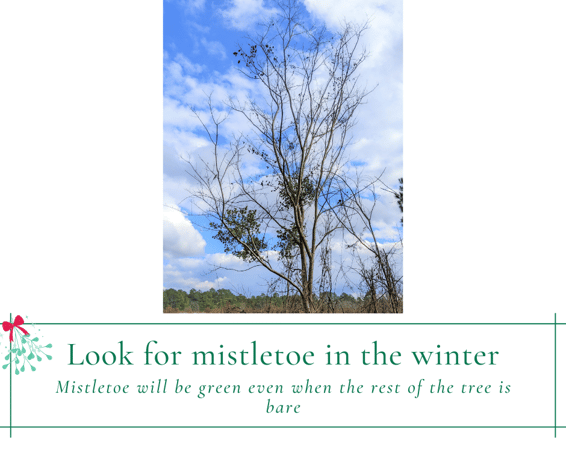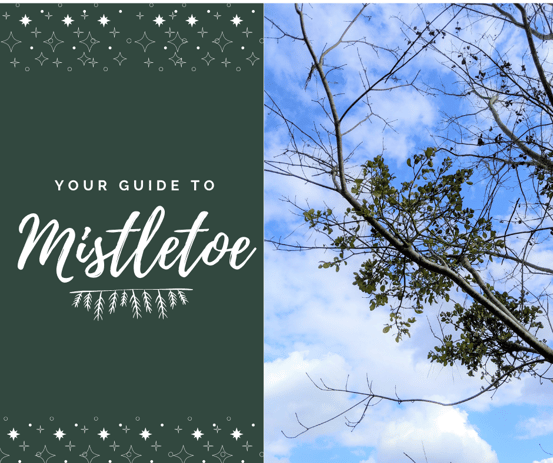We all know about the holiday tradition of kissing under the mistletoe, but what is mistletoe, exactly? If you spot mistletoe growing on your tree, should you count yourself lucky that you now have a supply of holiday décor or get rid of it?
We're answering all the questions you never even knew you had about mistletoe in this post, so let's get started!
What is mistletoe?
Mistletoe is an evergreen shrub. There are more than 1,300 species of mistletoe worldwide, but only two growth forms are native to the U.S.: the American mistletoe, which is the one we use for holiday festivities, and dwarf mistletoe.
Mistletoe has bright green flowers, and its white berries are poisonous to humans.
What kinds of trees does mistletoe like to grow on?
Mistletoe can be found on evergreen and deciduous trees. Here in the Charlotte, NC area, mistletoe may grow on a number of tree species, including pecan, river birch, beech, ash, hickory, oak, maple, and black gum trees.
Mistletoe tends to prefer trees with open crowns. It's easier to see it on deciduous trees in the winter when all the leaves are gone. They grow in ball-shaped masses about 3 feet wide and remain green while the rest of the branches are bare.
What is mistletoe doing up in my tree?
Mistletoe doesn't grow roots in the ground like other plants. Instead, it uses a specialized root-like organ called a haustorium to steal nutrients and water from a host tree.
So, does that make mistletoe a parasite? Well, technically, mistletoe is what's called hemi-parasite because although it takes a lot from its host tree, it can make some of its own food through photosynthesis.
Is mistletoe hurting my tree?
It depends. Healthy trees can handle some mistletoe. But a severe infestation can be detrimental to a tree's health, especially if that tree is already dealing with other stressors.
A severe mistletoe infestation can lead to:
- Stunted growth
- Branch dieback
- Reduced flowering and fruit production
Mistletoe infections can also act as entry points for insects, fungi, and bacteria. Severe cases may even result in the death of the tree.
So, is mistletoe all bad?
Absolutely not! Mistletoe is actually beneficial to a lot of wildlife. It provides food for mammals like deer, squirrels, and chipmunks, along with birds, butterflies, and bees.
Mistletoe also makes good nesting sites for birds. In fact, a heavy mistletoe infestation is often an indicator of a healthy bird population in the area.
What if I want to get rid of the mistletoe in my tree?
If your tree is older or very important to you, removing the mistletoe is a smart idea. Just cutting back the mistletoe so that it's flush with the branch may slow it down, but it's not enough to get rid of it. Your best bet is bringing in a tree care professional to remove the mistletoe for you.
Carolina Tree Care offers two options that can be used together or separately. The first option is pruning the infected branches. But if the mistletoe infestation is significant, pruning may cause more stress for your tree. And as far as aesthetics, your tree may not look too good after all that pruning.
The second option is treating the mistletoe with plant growth regulator or a targeted herbicide application. We'd perform these treatments after the leaves of the host tree are gone. Multiple applications are usually necessary for good control.

It takes an experienced tree care professional to ensure mistletoe control is done correctly. If there's mistletoe on your tree, we're ready to help. Request a consultation now to get started.
Like what you just read?
Then you'll love this: Treatment Spotlight: Plant Growth Regulators








